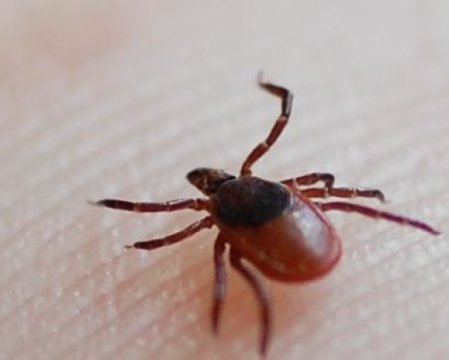[ad_1]
When Susannah Lerman talked with fellow researchers and friends about her study of the effects of less frequent lawn mowing to improve habitat for native bees, the response she heard most had nothing to do with bees. “The first thing people said was that letting the grass get longer would invite ticks,” said Lerman, a research ecologist with the USDA Forest Service’s Northern Research Station. “It was clear that before we could make the case for promoting lawns as bee habitat, we had to understand the tick risk.”
In a study published today in the journal PLOS ONE, Lerman and her Northern Research Station colleague, Research Entomologist Vince D’Amico, report on their quest to get to the bottom of a common assumption about the urban landscape: ticks like long grass. As part of a study to evaluate whether less frequent lawn mowing in residential lawns in Springfield, Mass., could promote floral resources and hence, serve as viable habitat for native bees, Lerman and her partners surveyed for blacklegged ticks (Ixodes scapularis, also known as deer ticks) as well as bees every three weeks. In 16 suburban Springfield lawns over the course of two summers, Lerman and colleagues documented 111 bee species, which equates to roughly one-quarter of all bees documented in Massachusetts. As for blacklegged ticks? In 144 tick drags in lawns of various lawn mowing frequencies and grass heights, Lerman and her colleagues found not a single one.
“There are obvious limitations to this study in terms of establishing the risk of ticks,” Lerman said. “We sampled for a single species of tick, and our study was limited to 16 residential lawns in a single city. Still, our study has two significant take-aways: you do not necessarily invite ticks if you mow the lawn every other week instead of every week, and common assumptions about nature are always worth investigating; scientists may be surprised by what we find.”
Blacklegged ticks are notorious as carriers of Lyme disease, a tick-borne infection with significant human health risks that is prevalent in the Northeast. While blacklegged ticks are no doubt lurking in people’s yards, D’Amico said that the grassy part of a property is probably too dry for the tick. “This species needs near 100 percent humidity for at least part of the day,” D’Amico said. “Where we have leaf litter, the ticks do very well.”
In the United States, an estimated 40 million acres of residential lawn managed by homeowners, businesses, government agencies and cemeteries have the potential to become habitat for beleaguered native bee species, if people can put aside a very reasonable fear and loathing of ticks. In this study, Lerman and her team found good reason to do so.
Story Source:
Materials provided by USDA Forest Service – Northern Research Station. Note: Content may be edited for style and length.
[ad_2]















